Turner’s contemporaries regarded him primarily as a marine painter. This perception extended to his persona, with many who met him commenting on his nautical gait, manner of speaking and other salty characteristics.
He frequented ports and coastal parts, relished sailing in storms, was immune to seasickness and famously had himself lashed to the mast to experience the full force of the gale before painting one of his most controversially ‘indistinct’ canvases ‘Snow Storm’. One witness recorded that he ‘somewhat resembled the master of a merchantman’, his first biographer described him as ‘half a sailor’, and he ended his days in unwedded bliss on the Thames in Chelsea with his long-term mistress, a seaman’s widow, Mrs Booth, where he himself was known to the neighbours as ‘Admiral Booth’.
More than half of Turner’s pictures were of the sea, yet there has never been a major exhibition devoted to this theme.Turner & the Sea presents as never before the full gamut of the artist’s marine pictures, from the first oil he exhibited, ‘Fishermen at Sea’ (1796), and the first of his works to be engraved and published (in 1807), ‘The Shipwreck’, to ‘The Fighting Temeraire’ (1839) and ‘The Wreck Buoy’ (painted in 1807 and reworked in 1849).
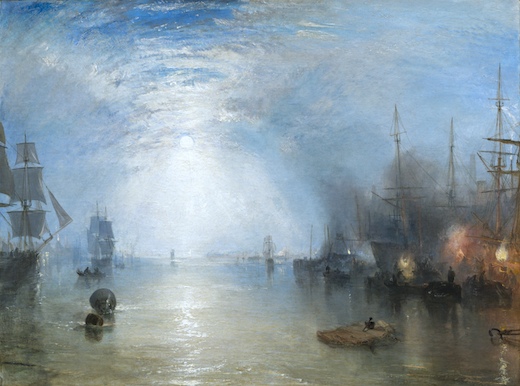 Keelmen heaving in Coal by Moonlight by J.M.W. Turner Photo: National Gallery of Art, Washington
Keelmen heaving in Coal by Moonlight by J.M.W. Turner Photo: National Gallery of Art, Washington
By choosing this theme that is central to Turner’s entire career, Christine Riding, who spent five years researching the project, and her co-curator Richard Johns are able to present in a consistently illuminating fashion every important phase of the artist’s development, telling us much about his personality, motivation and the historical background. The panels and captions in the show are admirably compact yet informative, and those who want to learn more can turn to the splendidly illustrated and eminently readable catalogue.
The exhibition opens with the first of a series of striking juxtapositions that punctuate the show: three large canvases of storm-tossed seas, ‘The Wreck of a Transport Ship’, ‘Calais Pier’ and ‘The Shipwreck’, all painted in the first decade of the 19th century. In this same period, Turner opened his own gallery — with advanced top-lighting, diffused by a stretched herring net lined with tissue paper — attached to his house in Harley Street.
The following section, ‘Charted Waters’, displays sea artists that inspired the young Turner when he entered the Royal Academy Schools in 1789, notably the 17th-century Dutchman Willem van de Velde the Younger and the 18th-century Frenchman Claude Joseph Vernet. Marine painting was already highly prized by collectors in Britain, but won much wider popular appeal during this time of rapid merchant maritime expansion and of extended war fought mainly at sea, culminating at Trafalgar in 1805. This event led to the only royal commission Turner ever received, ‘The Battle of Trafalgar’, executed 1823–24, shown in the next section ‘Trafalgar Squared’.
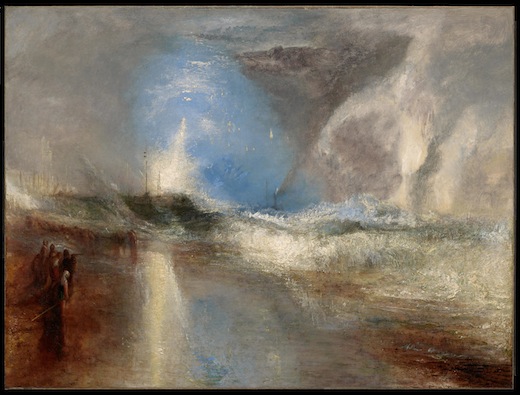 Rockets and Blue Lights to warn Steam-Boats of Shoal Water by J.M.W. Turner © Sterling and Francine Clark Art Institute, Williamstown, Massachusetts, USA Photo: Michael Agee
Rockets and Blue Lights to warn Steam-Boats of Shoal Water by J.M.W. Turner © Sterling and Francine Clark Art Institute, Williamstown, Massachusetts, USA Photo: Michael Agee
Turner was notoriously his own man, but his decision to turn to marine painting was surely stimulated by the ready market that the genre then offered. However, as the exhibition goes on to demonstrate, even if there was a degree of commercial calculation in this, the challenges presented by the depiction of the ever-changing sea and of the elements proved ideally suited to his extraordinary talents, ultimately enabling him to expand the frontiers of painting as an art form.
Nevertheless, as an excellent section, ‘Contested Waters’, reveals, Turner’s artistic dominance was by no means assured. Gifted young artists, such as Richard Parkes Bonington and George Philip Reinagle (both of whom died young), emerged as serious rivals. Turner’s riposte was to experiment, innovate and reinvent himself in ever more dazzling guises.
The verve and energy with which Turner responded to his competitors is nicely illustrated here by a pair of canvases first exhibited at the RA in 1827. The previous year the rising young marine artist Clarkson Stanfield had failed to finish his submission ‘Throwing the Painter’ in time. Turner alluded to the incident in a breezy scene, punningly entitled ‘Now for the Painter’, and for good measure exhibited it along with ‘Port Ruysdael’, a virtuoso full-on tempestuous seascape and tribute to the great Dutch marine artists of the past.
Not the least of Turner’s achievements was that his work remained controversial throughout his life and that he left so much to be discovered. The array of masterpieces in the final sections not only includes ‘Staffa, Fingal’s Cave’, ‘Snow Storm’ and ‘Rockets and Blue Lights’ — all of which originally attracted negative criticism — but also wonderful examples of watercolour and oil sketches whose subtle brilliance has been appreciated only in recent times — some of them never shown before.
Got something to add? Join the discussion and comment below.
Get 10 issues for just $10
Subscribe to The Spectator Australia today for the next 10 magazine issues, plus full online access, for just $10.
The exhibition goes to the Peabody Essex Museum, Salem, Massachusetts from 31 May until 1 September 2014.
You might disagree with half of it, but you’ll enjoy reading all of it. Try your first month for free, then just $2 a week for the remainder of your first year.

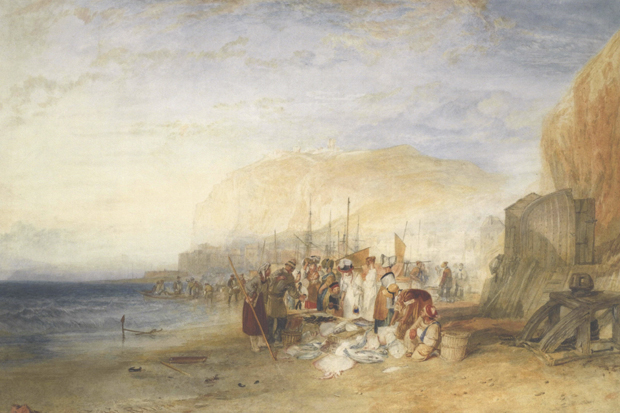
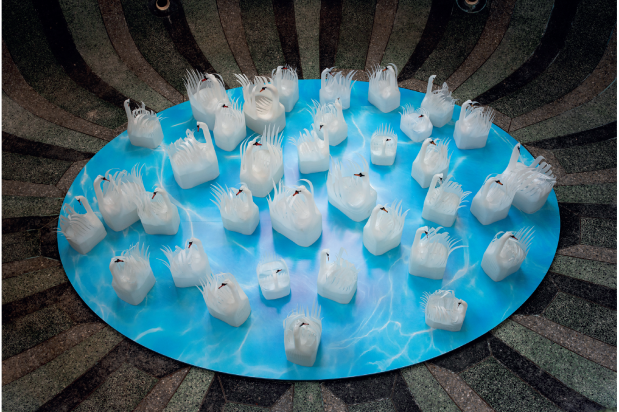

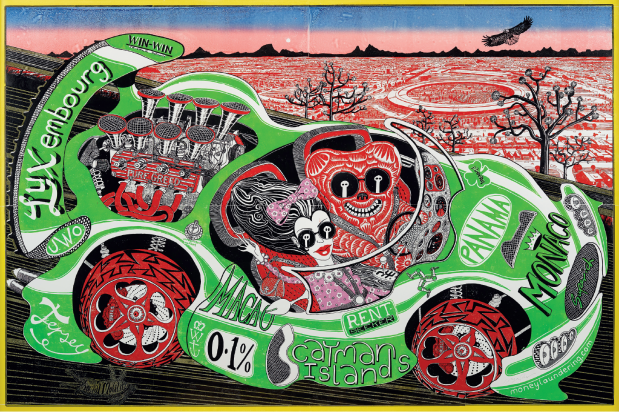
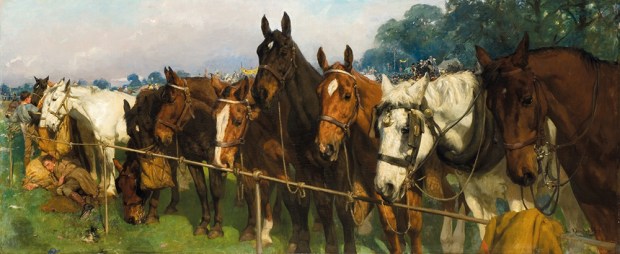

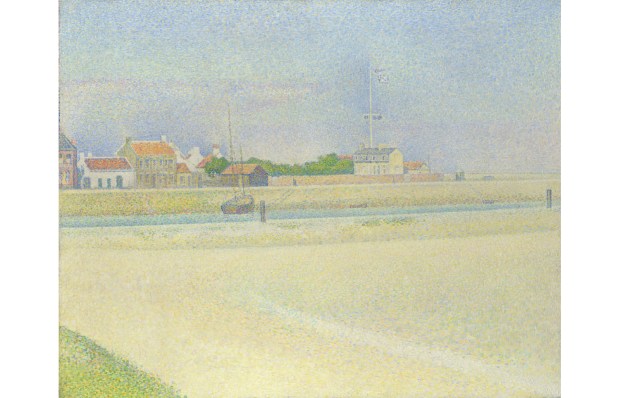






Comments
Don't miss out
Join the conversation with other Spectator Australia readers. Subscribe to leave a comment.
SUBSCRIBEAlready a subscriber? Log in